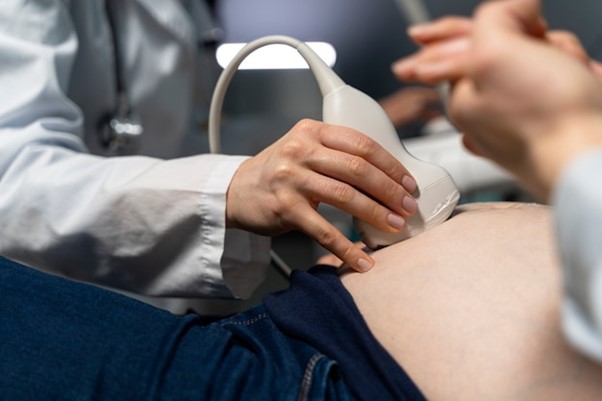Transrectal Ultrasound (TRUS)

Transrectal ultrasound (TRUS) is a diagnostic imaging procedure used to evaluate structures within the pelvis, particularly the prostate gland and surrounding tissues in males. It involves the insertion of a specialized ultrasound probe into the rectum to obtain detailed images of the prostate and adjacent structures. TRUS is commonly used in the diagnosis, staging, and monitoring of prostate conditions, including prostate cancer and benign prostatic hyperplasia (BPH).
Purpose of Transrectal Ultrasound (TRUS)
Prostate Imaging and Biopsy Guidance
The primary purpose of TRUS is to visualize the prostate gland and surrounding tissues to assess for abnormalities such as tumors, nodules, or enlargement. TRUS is also used to guide prostate biopsies, where tissue samples are collected for further examination to diagnose or rule out prostate cancer.
Evaluation of Prostate Disorders
TRUS is used to assess various prostate disorders, including prostate cancer, BPH, prostatitis, and cysts. It helps determine the size, shape, and consistency of the prostate gland and identifies any focal lesions or areas of concern.
Procedure of Transrectal Ultrasound (TRUS)
Preparation and Process
The TRUS procedure typically involves the following steps:
Patient Preparation: The patient is positioned on their side with knees bent, or in the lithotomy position. A lubricated ultrasound probe is then inserted into the rectum.
Ultrasound Imaging: The ultrasound probe emits high-frequency sound waves that penetrate the rectal wall and generate real-time images of the prostate gland and surrounding structures on a monitor.
Image Acquisition: The ultrasound technician or radiologist moves the probe to obtain images from different angles, ensuring comprehensive visualization of the prostate gland. Measurements of the prostate size and volume may be taken during the procedure.
Biopsy Guidance (if indicated): In cases where a prostate biopsy is needed, TRUS is used to guide the biopsy needle to specific areas of the prostate gland, targeting suspicious lesions identified on ultrasound.
Clinical Applications
Prostate Cancer Detection and Staging
TRUS plays a crucial role in the detection and staging of prostate cancer. It helps visualize suspicious areas within the prostate gland, guiding the biopsy process to obtain tissue samples for pathological analysis. TRUS may also be used to assess the extent of tumor involvement and aid in treatment planning.
Evaluation of Benign Prostatic Hyperplasia (BPH)
TRUS is used to assess the size and configuration of the prostate gland in individuals with BPH. It helps determine the degree of prostate enlargement, the presence of prostate nodules or cysts, and the degree of obstruction of the urethra. This information guides treatment decisions, including medication therapy or surgical interventions.
Advantages and Limitations
Advantages: TRUS provides high-resolution, real-time images of the prostate gland and surrounding structures, allowing for accurate diagnosis and precise biopsy guidance. It is a relatively quick and well-tolerated procedure, with minimal discomfort for most patients.
Limitations: While TRUS is an effective imaging modality for evaluating the prostate gland, it may have limitations in detecting small or subtle lesions, particularly in cases of multifocal prostate cancer. Additionally, TRUS is operator-dependent, and the quality of imaging may vary based on the experience of the ultrasound technician or radiologist.
Integration with Healthcare
TRUS is commonly integrated into the diagnostic workup and management of prostate conditions, including prostate cancer screening, diagnosis, and surveillance. It complements other diagnostic tests, such as digital rectal examination (DRE), prostate-specific antigen (PSA) testing, and magnetic resonance imaging (MRI), to provide a comprehensive evaluation of prostate health. Results of TRUS guide treatment decisions and monitoring strategies tailored to the individual patient’s needs. Regular follow-up may be recommended based on the findings of TRUS and other diagnostic tests.

